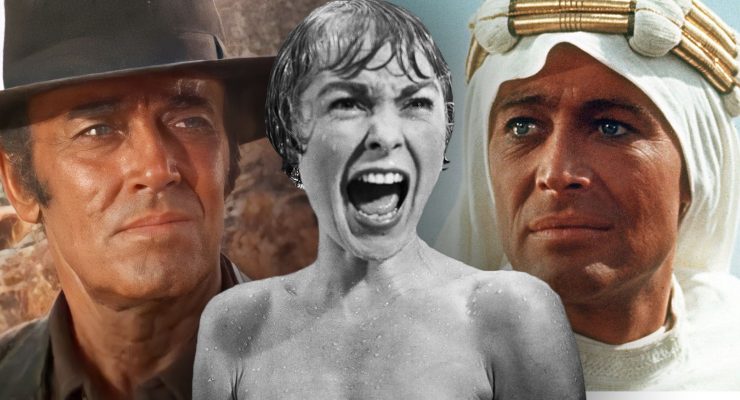Trevor Hogg continues his Peter Weir retrospective with a look at his internationally acclaimed second film…
Picnic at Hanging Rock, 1975.
Directed by Peter Weir.
Starring Rachel Roberts, Vivean Gray, Helen Morse, Kirsty Child, Anne-Louise Lambert, Jacki Weaver and Tony Llewellyn-Jones.
SYNOPSIS:
At the turn of the twentieth century a group of Australian schoolgirls vanish upon entering a mysterious rock formation while picnicking on Valentine’s Day.
In filming the strange period tale based on the novel by author Joan Lindsay, filmmaker Peter Weir had to address a fundamental narrative problem. “With much of Picnic at Hanging Rock it was clearly dangerous ground I was treading on, given the audience’s preconditioning, with a mystery that had no solution. I had to supply an ambience so powerful that it would turn the audience’s attention from following the steps of the police investigation into another kind of film.” To accomplish this for his 1975 movie, the resourceful Australian created an otherworldly atmosphere by experimenting with camera speeds as well as various types of recorded sounds, such as white noise and earthquakes.
Casting proved to be difficult, recalled Peter Weir. “I knew how they had to look from photographs and paintings. The hard part was finding them.” He and the film’s executive producer traveled across the country. “Between Pat Lovell and me, we saw a couple of hundred girls in various states, but by chance found this particular face, this pre-Raphaelite, nineteenth century look only in South Australia. You can still see it there – perhaps it’s something to do with the way of life. I think of the twenty girls, the large majority were from Adelaide.”
In the movie, which takes place a year before Australia obtains nationhood, a group of adolescent schoolgirls at Appleyard College prepare for a picnic midst the Valentine’s Day celebrations. Upon arriving at Hanging Rock a weird event occurs as every timepiece and wristwatch stops suddenly at noon. Against their headmistress’s wishes a group of four schoolgirls led by the angelic Miranda decide to explore the cavernous rock. After a brief nap on the plateau, Miranda and two other girls rise as if in a trance. The fourth pleads for them not to go but the protest goes unheard; as her friends disappear into an inner recess she lets out an ungodly scream. A search of the eerie volcanic rock formation eventually uncovers one of the disappeared schoolgirls who has no memory of the event. Hysteria grips both the school and the community as they attempt to comprehend the bizarre circumstances and the disastrous results.
When asked whether there were schoolgirls who vanished at Hanging Rock, the acclaimed director responded, “Supposedly, but no one could ever find any newspaper accounts. I think it was an invention on the part of the novelist.” He went on to add, “What interested me was that people disappear every day, seemingly into thin air sometimes, and they’re never heard from again. And it’s very important in many cultures to bury the body and having a feeling of closure when someone dies. With disappearance you don’t have that.”
As to what happened to them, Peter Weir was unsure. “I don’t really know,” he confessed, “I’m of the kind of mind that accepts that there are no answers to every question.” When pushed to guess, Weir replied, “The most plausible one is that the rock formation that they disappeared around has unplumbed depths. The other interesting thing is the notion of time itself. Sort of a Bermuda Triangle type-of-thing involving another dimension.” In spite of these possible solutions, the astute storyteller remarked that some things are better left unsolved. “I loved Sherlock Holmes as a kid, but I remember being disappointed when he’d come up with these simple explanations for these complex mysteries. I always was fascinated by the mystery itself, as suppose to the answer behind it.”
Initially, Peter Weir had concerns about filming the natural Australian landmark. “I remember being quite alarmed when I first arrived there that the rock didn’t have an impressive distant view. I had expected, with a rock called Hanging Rock, that there would be some fascinating outcrop that gave the place its name. But it didn’t look in any sense threatening or particularly powerful and for a long time I planned to do an optical for a wide shot, where I would matte on a further outcrop of rock above the peak, or even move to another location for wide shots. That bothered me for a long time until one morning when we were going to work there was a particular mist across the plain that gave the Rock that element of drama.” Weir liked the image so much that he used it as the opening shot.
“Films viewed at different times and different places can seem very different – shorter, longer, better, worse, didn’t ever know it was so funny,” Weir remarked. “This film is obviously viewed very differently now from then, and by school girls with a different view from others. It is often hard to remember what you intended at the time.” Intriguingly, when he was given an opportunity to revisit the film in 1998, the filmmaker decided to reshape his twenty-three year old cinematic creation by cutting seven minutes and adding two brief moments.
To honour the movie’s enduring popularity, every Valentine’s Day it is screened on the picnic grounds at Hanging Rock.
Picnic at Hanging Rock trailer…
Peter Weir Blogathon
Trevor Hogg is a freelance video editor and writer who currently resides in Canada.









